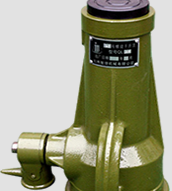The reason why the screw jack has the function of lifting heavy objects lies in its precise internal screw transmission system. This system integrates key components such as ratchet, bevel gear, screw, and lifting sleeve. Each component achieves efficient force transmission through tight mechanical connections, ultimately driving the lifting sleeve to complete the lifting action, making it the "power core" of the screw jack.

In the field of industrial transmission, spiral transmission relies on the relative motion between the screw and nut to transmit force, giving rise to various forms of transmission. The transmission scheme adopted by the screw jack can be accurately summarized as follows: the nut is fixed in place, and the screw rotates and reciprocates linearly under the action of torque. With the support and positioning of the nut, this structure can convert small input torque into strong axial thrust. Even in intermittent operation mode, it still has excellent self-locking performance - the operator can control the screw to smoothly complete the lifting action by continuously pressing the handle.
This spiral force transmission structure not only has the technical advantages of simple design, compact component layout, and uniform and precise operation, but also its reliable self-locking characteristics perfectly meet the industrial application needs of spiral jacks, allowing operators to take a short break during the lifting process, which not only improves operational convenience but also further ensures operational safety.
Tag:
2025-11-26
2025-11-26
2025-11-26
2025-11-19
2025-11-19
2025-11-19
2025-11-12
2025-11-12
2025-11-12
2025-11-05